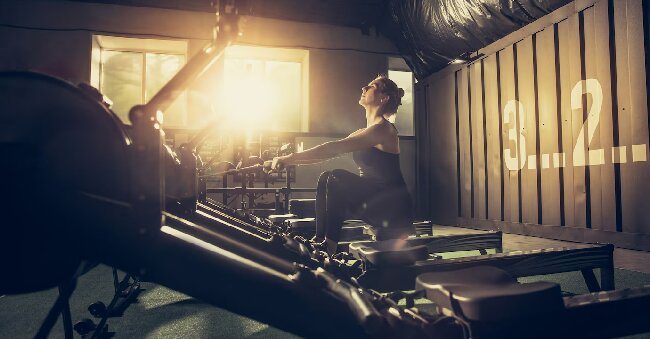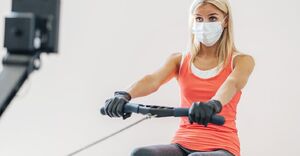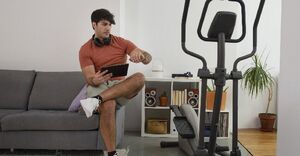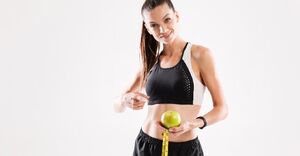
Comprehensive Guide to Rowing Machine Training: How to Select and Use a Rowing Machine
Are you looking for a full-body workout that is low-impact and improves cardiovascular health? Look no further than a rowing machine.
In this comprehensive guide, we will explore the benefits of rowing machine training, how to choose the right machine for your needs, setting it up, proper rowing technique, creating a workout plan, and safety tips.
Whether you are a beginner or a seasoned rower, this article will provide you with all the information you need to make the most out of your rowing machine training.
What is a Rowing Machine?
A comprehensive guide to rowing machine training, including selecting, using, and optimizing a rowing machine for fitness and workout purposes, can greatly benefit individuals seeking indoor rowing as a form of cardio exercise and full-body workout.
The benefits of rowing machine training extend beyond just cardiovascular health. It also provides a low-impact yet highly effective way to strengthen and tone muscles throughout the entire body, engaging the core, back, arms, and legs with each stroke.
This form of exercise offers a balanced workout, helping individuals improve their overall physical fitness levels. When using a rowing machine, focusing on proper technique, such as maintaining a strong, straight posture and utilizing the legs to drive the motion, is crucial for maximizing the workout’s benefits.
Considering factors like the resistance levels, monitor display features, and the overall build and durability of the rowing machine can significantly impact the effectiveness and longevity of its use.
Benefits of Rowing Machine Training
Rowing machine training offers a multitude of benefits, encompassing cardiovascular exercise, muscle engagement, enhanced stamina and endurance, calorie burning, and low-impact, full-body workout options for individuals seeking effective indoor rowing within the convenience of their home gym.
Full Body Workout
Rowing machine training provides an exceptional full-body workout, engaging multiple muscle groups, incorporating resistance, and requiring precise technique for effective indoor rowing exercises using the rowing machine.
This form of exercise targets the legs, back, arms, and core, making it a comprehensive workout. The resistance aspect of rowing helps in building strength and endurance, while the technique involves a coordinated movement of the body for maximum efficiency.
Incorporating rowing into your fitness routine can be highly effective in improving cardiovascular health, muscle tone, and overall physical endurance. The low-impact nature of rowing makes it suitable for individuals of all fitness levels, offering a versatile option for full-body conditioning.
Low Impact Exercise
Rowing machine training offers a low-impact exercise option that promotes cardiovascular health, enhances endurance and stamina, and supports joint health. This makes it an ideal choice for indoor rowing and overall physical conditioning using the rowing machine.
Rowing is an excellent way to improve heart health without putting too much pressure on your joints. The rhythmic motion engages your entire body, giving you a full-body workout and increasing your lung capacity.
The consistent and fluid movements of rowing also help build endurance and stamina over time. Plus, the rowing machine is gentle on the joints, making it a great option for those with joint concerns or recovering from injuries.
What’s more, the rowing machine is versatile and allows for different resistance levels, catering to various fitness levels and goals. So why not give it a try and reap the many benefits of rowing?
Improves Cardiovascular Health
Rowing machine training significantly improves cardiovascular health by providing a dynamic exercise that enhances stamina, endurance, and heart rate regulation, making it an effective form of indoor rowing for a comprehensive full-body workout using the rowing machine.
The repetitive pulling and pushing motion of rowing engages the major muscle groups in the legs, back, arms, and core, offering a complete workout. This type of exercise enhances the cardiovascular system by increasing lung capacity and improving oxygen utilization.
The consistent rhythm of rowing helps regulate heart rate, promoting cardiovascular efficiency. Indoor rowing also allows for controlled resistance settings, making it suitable for people of different fitness levels and ages to progressively challenge themselves and achieve better heart health.
Builds Muscle and Strength
Rowing machine training effectively builds muscle and strength through resistance-based, full-body workouts that optimize technique and contribute to overall muscle engagement. This makes it a beneficial form of exercise for weight management and physical conditioning using the rowing machine.
The rowing machine provides a comprehensive workout that targets various muscle groups, including the back, arms, and legs. This results in increased muscle mass and improved strength. Additionally, the rowing machine offers adjustable resistance levels, allowing individuals to gradually increase the intensity of their workouts as their strength and endurance improve.
The fluid and controlled movements required during rowing help refine technique and posture, reducing the risk of injury and enhancing overall performance. By engaging multiple muscle groups and promoting proper form, rowing machine training presents an effective way to enhance muscle strength and improve physical fitness.
How to Choose the Right Rowing Machine?
Selecting the right rowing machine involves considering various factors such as equipment specifications, adjustable resistance, monitoring features, assembly requirements, maintenance considerations, and the integration of proper rowing technique encompassing aspects like stroke, drive, recovery, catch, finish, drag factor, damper setting, and foot straps.
When choosing a piece of equipment, it’s important to consider its specifications such as dimensions, weight capacity, and material quality. These factors can impact the machine’s durability and stability.
Adjustable resistance options are also crucial, as they allow users to customize their workout intensity. Additionally, monitoring features like heart rate monitors and performance tracking tools can provide valuable data.
It’s also important to ensure that assembly and maintenance requirements are manageable in order to maintain the machine’s longevity. And don’t forget, proper rowing technique is essential for both maximizing the effectiveness of the workout and preventing injury.
Types of Rowing Machines
Various types of rowing machines, including magnetic, air, water, and hydraulic models, offer diverse features such as foldable designs, considerations for budget, sizing, weight capacity, assembly requirements, noise levels, storage options, and warranty coverage.
Magnetic rowing machines are known for their smooth and quiet operation, making them suitable for home use. Air rowers simulate the feeling of rowing on water and provide adjustable resistance based on the user’s effort.
Water rowing machines offer a realistic rowing experience with the soothing sound of water, while hydraulic models are compact and budget-friendly. Each type caters to different needs and preferences, allowing individuals to choose the most suitable option based on their fitness goals, space limitations, and personal preferences.
Resistance Types
Understanding resistance types in rowing machines:
When it comes to rowing machines, it’s important to understand the various resistance types available. This includes adjustable resistance options, which can have a significant impact on stroke, drive, recovery, drag factor, damper setting, and foot straps. Knowing how these factors work together is crucial for optimizing technique and workout performance.
The benefits of adjustable resistance:
One of the main benefits of adjustable resistance options is the ability to tailor the intensity of your workout. This is especially useful for rowers of different fitness levels and training goals. By simulating realistic rowing conditions, adjustable resistance can help strengthen stroke dynamics and engage more muscles.
Refining technique and improving performance:
Having control over resistance levels allows rowers to refine their technique and develop a smoother, more efficient stroke. This not only improves overall performance but also provides a more versatile and challenging workout experience. With adjustable resistance, rowers can enhance their cardiovascular endurance and muscle conditioning.
Features to Consider
When choosing a rowing machine, it’s essential to consider features such as monitoring capabilities, assembly requirements, maintenance considerations, noise levels, storage options, warranty coverage, compatibility, display features, programs, and connectivity for an optimized indoor rowing experience.
The monitoring capabilities of a rowing machine allow users to track their performance metrics such as distance, time, strokes per minute, and calories burned, providing valuable feedback for progress and motivation.
In addition, easy assembly and low maintenance requirements ensure a hassle-free experience. When it comes to noise levels, look for a machine with smooth and quiet operation. Storage options should be space-efficient, considering foldable or compact designs.
Ensuring warranty coverage for the frame, parts, and labor is crucial, and technological features such as Bluetooth connectivity and pre-programmed workouts can enhance the overall rowing experience.
Setting Up Your Rowing Machine
Setting up a rowing machine involves proper assembly, maintenance practices, and the implementation of correct rowing technique, encompassing aspects such as the rower, stroke dynamics, drive, recovery, catch, finish, drag factor, damper setting, and foot straps for an effective and safe indoor rowing experience.
When setting up your rowing machine, start by carefully following the assembly instructions provided by the manufacturer. Ensure that all parts are properly connected and secured, and regularly inspect for any signs of wear or damage to maintain its smooth functionality.
To achieve the correct rowing technique, focus on maintaining a strong and controlled stroke dynamics, engaging the drive and recovery phases efficiently. Pay attention to the catch, where the oar blade enters the water, and the finish where your hands move away from your body. Adjusting the drag factor and setting the foot straps to your comfort and stability are critical for an effective workout with reduced risk of injury.
Proper Rowing Technique
Mastering proper rowing technique is essential for optimizing stamina, endurance, muscle engagement, form, calorie expenditure, and weight management during indoor rowing. This involves precise execution of the stroke, drive, recovery, catch, finish, drag factor, damper setting, and foot straps on the rowing machine.
Rowing is a sport that requires mastery of various elements to achieve an efficient and powerful stroke. This leads to improved cardiovascular endurance and overall stamina. Engaging the muscles in the legs, core, and upper body ensures a full-body workout, making it an effective way to burn calories and manage weight. Proper form and technique also reduce the risk of injury and maximize the benefits of rowing, making it a valuable addition to any fitness routine.
Starting Position
Establishing the correct starting position is the foundation of mastering proper rowing technique. This encompasses aspects such as technique precision, form alignment, rower positioning, stroke dynamics, and the setup of the drive, recovery, catch, finish, drag factor, and foot straps on the rowing machine.
Proper body alignment is crucial for rowers using a rowing machine. This includes securely fastening feet in the foot straps for optimal power transfer during the drive phase.
The catch, where the oar blade enters the water, and the seamless transition into the drive, engaging the legs, body swing, and arms, are all essential for efficient and powerful strokes. Additionally, setting an appropriate drag factor ensures consistent effort and control throughout the stroke cycle.
Drive Phase
The drive phase in rowing technique involves precise execution of the stroke, resistance management, and the calibration of drag factor and damper setting, influencing the effectiveness of the rowing motion and the overall workout experience on the rowing machine.
During the drive phase, the rower exerts maximum power through the legs, engages the core, and maintains a strong grip on the handle to propel the rowing machine’s seat backward.
Effective management of resistance results in a smooth and challenging workout. Additionally, optimizing the drag factor and damper setting replicates the feel of rowing on water, providing a more authentic and immersive rowing experience.
Recovery Phase
The recovery phase in rowing technique is crucial for maintaining proper stroke dynamics, form alignment, and the sustainment of stamina and endurance during indoor rowing exercises, contributing to an effective and efficient workout on the rowing machine.
By focusing on the recovery phase, rowers can optimize their movements, allowing for a smoother transition from the drive phase to the next stroke.
This phase enables the rower to reset their body posture, catch a breath, and prepare for the next powerful stroke.
Proper recovery not only enhances the overall efficiency of the rowing exercise but also helps in preventing injuries by allowing the muscles to rest and recover before engaging in the next sequence of movements.
Common Mistakes to Avoid
Avoiding common mistakes is essential for injury prevention and the optimization of technique, form, rower positioning, and the execution of the stroke, drive, recovery, catch, and finish during indoor rowing workouts to ensure a safe and effective experience on the rowing machine.
Proper posture and alignment are essential for a safe and effective rowing motion. Incorrect positioning can strain the back and shoulders, so it’s crucial to maintain good form. Remember to focus on consistent and controlled breathing to support proper muscle engagement and prevent fatigue.
It’s important to avoid applying excessive force to the handle, as this can lead to overexertion and potential injury. Instead, pace yourself and gradually increase the intensity for a successful and injury-free rowing session.
Creating a Rowing Machine Workout Plan
Developing a comprehensive rowing machine workout plan involves considering various factors such as exercise objectives, cardiovascular conditioning, muscle engagement, weight management, technique optimization, stamina enhancement, and the incorporation of interval training, high-intensity interval training (HIIT), power, speed, distance, time, stroke rate, pace, and splits for an effective and diverse workout experience.
When creating a workout plan, it’s crucial to consider individual fitness goals. This could mean focusing on building endurance, increasing strength, or losing weight. A comprehensive rowing workout should target major muscle groups like the legs, core, and arms, while also managing weight and improving cardio performance.
One effective way to achieve this is by incorporating interval training, HIIT, and varying workout intensities such as power and speed. This allows for maximum calorie burn and muscle toning. Additionally, tracking progress through distance, time, stroke rate, pace, and splits can help set and reach fitness goals.
Safety Tips for Rowing Machine Training
Practicing safety during rowing machine training involves adhering to essential tips for injury prevention, routine maintenance, and troubleshooting potential issues to ensure a secure and reliable workout experience on the rowing machine.
To ensure safe use of a rowing machine, it is important to maintain proper posture and form while rowing. This helps prevent strain on the back and shoulders. Additionally, regularly inspecting the machine for wear and tear, such as on the seat, handles, and straps, is crucial to prevent accidents.
Another key safety measure is understanding the resistance settings on the machine and adjusting them appropriately. This can help prevent unnecessary strain on the body and ensure a more effective workout. By following these safety precautions, you can enjoy a safe and effective rowing experience.




No Comments